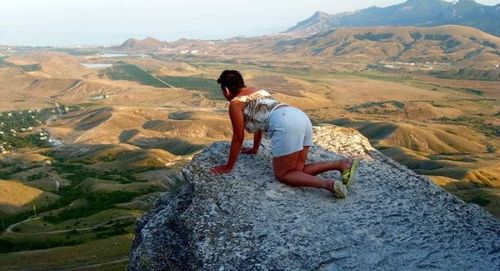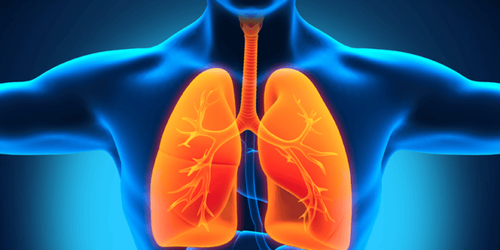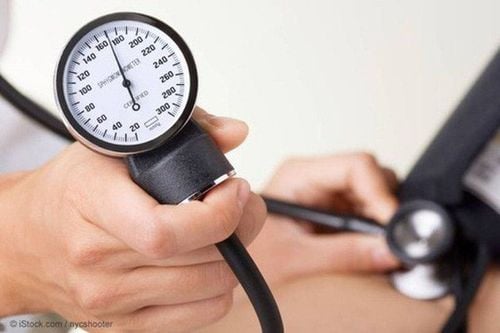This is an automatically translated article.
The effect of altitude makes breathing more difficult, there is a risk of high altitude shock due to lack of oxygen, which is life-threatening if the body has not been trained to adapt to high altitude climate conditions. .1. Risk of shock when climbing
Climbing activities are chosen by many people during the holidays because many people are afraid of the marine environment. However, for those who are not used to or have not adapted to the high altitude climate conditions, it will easily lead to the risk of some life-threatening acute diseases. Typically, for most cases, the threshold for symptoms to appear is around 2500m above sea level. From 2000 - 2500m, there is still the possibility of pathological manifestations, but at a milder level.Illnesses that occur when climbing are especially common in people with a previous history of these conditions, such as altitude shock, acute pulmonary edema, and cerebral edema during climbing.
2. Effects of altitude on health

Độ cao ảnh hưởng đến sức khỏe như thế nào?
In most cases of altitude shock, symptoms will subside after 24 - 48 hours of rest. If symptoms persist or worsen, return the patient to a lower altitude and initiate aggressive treatment.
2.2. Acute pulmonary edema When reaching an altitude above 3000m, acute pulmonary edema may occur with manifestations including: non-stop dry cough, shortness of breath, headache, physical impairment, fatigue, shortness of breath even at rest Rest and pain in the substernal area. In particular, the patient wheezes, has difficulty breathing even when lying down, sometimes vomits blood, hears crackles and snores, has a rapid heart rate, has a low-grade fever, has rapid, rapid breathing, and has a pale face. In critical cases, the patient becomes confused, comatose
Subclinical tests show a slight increase in white blood cells, X-ray shows signs of infiltration in one lung until dense in both lung side.
For acute pulmonary edema due to altitude effects, treatment must be carried out immediately in the field by: placing the patient in a supine position with the head elevated, giving oxygen until the patient improves or has can quickly bring the patient to a lower altitude and administer emergency medicine according to the doctor's instructions.
However, it is important to recognize and detect early symptoms of acute pulmonary edema. In the presence of respiratory symptoms, the patient must be quickly placed to rest and oxygenated to prevent the progression of pulmonary edema.

Khi lên đến độ cao trên 3000m, phù phổi cấp có thể xảy ra
Recognizing the symptoms of altitude sickness and early detection of encephalopathy is very important for prompt treatment of the patient. Treatment includes breathing oxygen, administering medication, and urgently bringing the patient to a low-lying area.
2.4. Subacute mountain sickness Subacute mountain sickness usually occurs in people who have not yet adapted to climate conditions and at altitudes above 4500m above sea level. Symptoms are similar to those of acute high-grade shock, but are more prolonged and somewhat more severe. Symptoms are accompanied by signs of dehydration, dry skin, and itching. On clinical examination, the hematocrit may be elevated, and the electrocardiogram and radiograph show signs of right ventricular hypertrophy. At this point, the patient should be completely rested, given oxygen and brought back to the low-lying area.
2.5. Chronic mountain sickness (Monge's disease) Manifestation of chronic mountain sickness is a lack of oxygen for a long time, only seen in some local people living in the highlands but losing the ability to adapt to climatic conditions. Signs of the disease are somnolence, mental depression, hypoxemia, leading to cyanosis of the extremities and face, mace-shaped fingers.
Blood tests show a hemoglobin index above 22g/dl, polycythemia vera, hematocrit usually greater than 75%, accompanied by right ventricular failure, right axis deviation electrocardiogram, right atrial and ventricular hypertrophy. X-ray results showed that the right heart was larger than normal. In addition, there are signs of alveolar hypoventilation and elevated PCO2. These symptoms will disappear when the patient returns to live in the lowlands.
3. How to prevent altitude shock?

Tránh dùng rượu, bia, thuốc lá hoặc các chất kích thích khác
Prepare and do optimal physical training before the trip Ascend gradually so that the body adapts slowly and should rest for 1-2 days after reaching the desired altitude or when reaching the dangerous altitude. Athletes, if they have to climb to an altitude of over 3000m, need to bring oxygen support equipment (such as an oxygen tank). oxygen) for a few days People with heart or lung disease should avoid high-altitude activities Every day should only go to an altitude of 300 - 500m Always stay in good health, rest and get enough sleep before Go Eat less in quantity but need to ensure enough nutrition and energy Avoid alcohol, beer, tobacco or other stimulants Limit unnecessary energy-consuming activities at dangerous altitudes Exercise breathing, using medicine for prevention and timely recognition of dangerous symptoms to promptly return the patient to a lower altitude People who are about to participate in activities related to Altitude (such as climbing), whether professional, experienced or amateur, should still be examined, consulted and carefully guided by a doctor before participating in order to limit the effects of altitude on health. strong.
Please dial HOTLINE for more information or register for an appointment HERE. Download MyVinmec app to make appointments faster and to manage your bookings easily.













